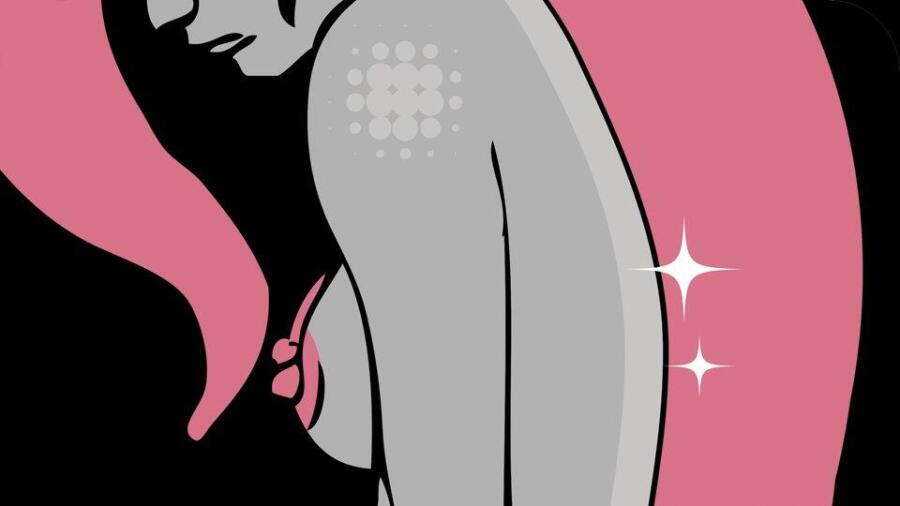I am walking into a friend’s BBQ when a guy sidles up beside me, reeking of booze and leering. “Entry for a kiss,” he says. “Erm, no, thanks,” I say and avert my eyes. He persists, “Come on, just a quick one.” I ignore him, looking intensely at my phone. His tone turns more aggressive, “Jesus, you’re being such a stuck-up bi…,” but before he can finish, I touch an eject button on my phone and he catapults into the sky, gone from my sight.
If only the outside world was like a live cam show, equipped with a block option and easy escape button. For socially anxious people, the fear of being judged or criticized can be overwhelming, so much so that any social interaction can seem threatening. Their fears affect their relationships and their ability to work.
Outside your safety zone, but before your panic zone, there is an uncomfortable-yet-tolerable zone that enables you to heal. Finding the healing zone can be tricky. But you don’t have to do it alone.
Camming offers a solution for people who struggle with social interactions, because they can work from the safety of their bedrooms and interact only with people who are interested in them. There is a greater sense of safety, because they can block someone or get offline anytime they feel uncomfortable.
But there’s a downside. The more we avoid the outside world, the more we convince our brains that it is intolerable. And the longer we stay in our comfort zone, the harder it gets to go beyond it.
Fortunately, camming has a flexibility that allows cam models to venture outside their comfort zone at their own pace. While working online, they can strengthen social skills and practice calming exercises. Offline, they can use these techniques to build up their tolerance to outside world interactions.
See, we experience social anxiety in our minds, within our bodies, through our emotions and when we interact with others. Here are ways to address all of these aspects:
Body Awareness
When we feel nervous, our bodies react with a stress response. Our muscles tense, hands shake and temperatures rise. Our brains interpret these physical symptoms as further evidence that we should be nervous and we become more nervous as a result. If we learn to calm our bodies, our physical symptoms lessen and we can interrupt the stress response.
Breathing
When we are nervous, we tend to breathe shallowly or hold our breath. The lack of oxygen makes it more difficult for us to think straight. Use a breath-calming exercise to get your brain back online; many can be found on YouTube and various sites.
Grounding
Avoiding or running away alleviates anxiety in the short term but reinforces our fears in the long run. Grounding helps us stay and face our fears by triggering our parasympathetic (resting) response. Search for grounding exercises online.
So many of the available exercises for these parts of you are free, portable and discreet, so you can practice them during down times in your cam space. Don’t try these for the first time when you are already stressed. Get good at them so you can break them out when you need them most.
You can also get to know your triggers well. Sometimes, triggers are obvious. Other times, anxiety just springs on us. The next time you feel distress, notice what you are thinking, feeling and observing. When you can, write down what happened in the minutes before you felt anxious. Be specific. Then, assess which of your worries are productive vs. unproductive.
When we are outside our comfort zone, our inner critic often pops up. As harsh, strict and punishing as our inner critic can be, it has a job to do. Its job is to protect us from negative judgment, rejection and emotional pain. For the socially anxious, it is often overreactive and ill-informed. How effective is your inner critic at protecting you? Does it help you get what you want? The answer is often yes and no. So, separate the productive from unproductive worry. For example:
Unproductive Worry
“I’m going to freak out and look crazy. Everyone will laugh at me.” Is this statement true or does it just feel true? Does it make your anxiety better or worse?
Productive Worry
“I’ve had panic attacks in similar situations. I am worried I will have another one.” You know when a worry is productive because it prompts you to problem-solve rather than adding to your distress.
Replace unproductive worry with more helpful and realistic alternatives. Mood Tools offers a free Thought Diary app that will help you test your worries and replace them with more productive alternatives.
Emotions, especially vulnerability and compassion, are also vital. Facing our fears means feeling vulnerable. Because our inner critic is there to protect us, it hates vulnerability and will jump into defense mode to protect us by saying things like, “You can’t do it,” or “You’re going to fail and look stupid.” Our critic will say anything to keep us away from potential rejection. As anyone anxious knows, telling ourselves to “just stop worrying,” doesn’t work. We end up beating ourselves up for beating ourselves up. Instead, show compassion to your inner critic.
Self-compassion means loving all parts of ourselves, even the harsh inner critic. It may seem like a weird concept to love the part of us that we want to change, but criticizing our inner critic just adds pressure onto the anxiety we already feel.
Showing kindness to our inner critic breaks the anxiety cycle. Tell the inner critic, “It is understandable that you want to avoid emotional pain. Thank you for looking out for me. I hear you, but I got this.” Then, move forward. Brené Brown does an awesome TED Talk on vulnerability, which you can find online.
When it comes to interaction, ask yourself: What are you missing out on because of your anxiety? Write down your anxiety-provoking situations. Then pick one that you want to work on and commit to doing it (gradually).
“Graduated exposure” means taking tiny steps towards our goals until we feel strong enough to take further tiny steps. Tiny steps are vital, because they allow us to practice tolerance and gain confidence. Emma McAdam’s YouTube channel is a great resource to walk you through the process.
If you have tried to face your fears before but failed, don’t be disheartened. By jumping in, you might have ventured too far beyond your safety zone. Outside your safety zone, but before your panic zone, there is an uncomfortable-yet-tolerable zone that enables you to heal. Finding the healing zone can be tricky. But you don’t have to do it alone.
Contact Pineapple Support and someone will guide you through this process at your own pace. Pineapple Support works on a sliding scale so you only pay what you can afford. We are here for you.
Jena Field is a cognitive behavioral therapist, coach and counseling psychologist who works closely with adult industry mental health organization Pineapple Support. She can be followed @monkeytherapist on Twitter or TheMonkeyTherapist.com.




